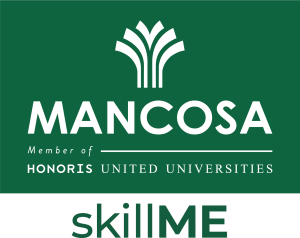
The world of supply chain isn’t just about moving goods. It’s about strategy, leadership, and staying ahead of disruption.
From procurement to delivery, modern supply chains are complex, fast-moving, and in urgent need of skilled professionals who can lead with vision.
If you’re ready to boost your expertise, the skillME Supply Chain Management: Leadership and Strategy short course is a powerful way to start. In just two days, you’ll gain practical, up-to-date insights that can set you apart in this evolving industry.
In this post, we’ll unpack how today’s supply chains work, what makes effective management and leadership essential, and how the right training can fast-track your career.
The supply chain today: how does it work?
In today’s interconnected global economy, the supply chain is the invisible engine powering nearly every industry, from the clothes we wear to the food we eat and the tech we use daily.
At its core, a supply chain is a complex network of people, processes, and technologies that work together to move products from raw materials to finished goods in the hands of consumers.
In South Africa, the manufacturing sector contributes over 13% to GDP, employing over 1.5 million people.
Some of the functions the supply chain includes are as follows:
Raw material sourcing
Every supply chain begins with raw materials. These may include metals, textiles, plastics, agricultural goods, or natural resources, which are often sourced from suppliers across the globe.
South Africa, for instance, is a key global player in raw material exports, particularly in minerals like platinum and gold. Procurement decisions are influenced by cost, quality, environmental conditions, and geopolitical factors.
Disruptions at this stage, like mining strikes or sanctions, can trigger ripple effects downstream.
Manufacturing and production
Once sourced, materials are shipped to manufacturing facilities. Some companies operate within a single country, while others adopt a globally dispersed model to take advantage of cost savings and specialisation.
Automation and lean manufacturing principles now dominate production processes, helping improve efficiency, reduce waste, and ensure consistent quality.
Storage and inventory management
Post-production goods enter storage hubs such as warehouses or distribution centres. Effective inventory management is essential to prevent stockouts or overstocking, both of which are costly.
Tools like barcode systems, warehouse management software (WMS), and predictive analytics allow companies to optimise stock levels and respond to demand shifts in real-time.
Transportation and logistics
This stage is the beating heart of logistics: moving goods from A to B. Whether it’s via air, land, or sea, transportation is a major cost driver and time determinant in supply chains.
For example, South Africa’s port of Durban is the largest and busiest in sub-Saharan Africa, but it also experiences significant congestion and delays, impacting delivery timelines. Efficient logistics planning can make or break customer satisfaction.
Distribution channels
The final stretch of the supply chain is distribution: how products reach end users. Depending on the strategy, companies may use wholesalers, physical retail stores, or direct-to-consumer models via e-commerce.
The rise of online shopping, accelerated by the COVID-19 pandemic, has reshaped distribution strategies worldwide, demanding faster fulfilment and last-mile delivery solutions.
Technology and automation
Modern supply chains are deeply integrated with digital tools. Artificial intelligence (AI), the Internet of Things (IoT), blockchain, and real-time tracking are no longer luxuries but rather competitive necessities.
These technologies offer transparency, speed up decision-making, and allow proactive issue resolution. For example, IoT sensors can alert companies to temperature changes in refrigerated trucks, helping avoid spoilage.
Risk and disruption management
Supply chains are fragile ecosystems, vulnerable to unexpected disruptions like natural disasters, pandemics, cyberattacks, and political unrest.
The COVID-19 pandemic exposed just how quickly global systems can grind to a halt. Companies are now focusing on resilience through diversification, local sourcing, dual suppliers, and more agile logistics frameworks.
Sustainability and ethical sourcing
As environmental and social awareness grows, supply chains are under increasing scrutiny. Customers and regulators are demanding ethical sourcing practices, lower carbon emissions, and transparent reporting.
South African retailers, for example, are adopting sustainable packaging and working with local farms to reduce food miles and promote fair labour practices. The shift toward circular economy models, where waste is minimised and materials are reused, is gaining momentum globally.
8 Things to understand about supply chain management & leadership strategy
Whether you’re considering a career in supply chain or stepping into a leadership role, it’s important to understand that this field is far more strategic and impactful than it may first appear. Below are eight essential insights that shape how modern supply chains operate and thrive.
1. Supply chain management (SCM) is more than logistics
While logistics (like transportation and warehousing) are vital, supply chain leadership goes much deeper. It also involves procurement, sourcing, planning, forecasting, relationship management, and risk mitigation.
For example, a supply chain manager at a food retailer isn’t just concerned with delivering products but also negotiating contracts with farmers, planning seasonal stock levels, and monitoring compliance with health standards.
2. Leadership drives strategic alignment
Supply chain leaders are responsible for aligning supply chain objectives with overall business goals. This means setting priorities, fostering collaboration between departments, and ensuring the entire network contributes to customer satisfaction and profitability.For example, a South African manufacturing company decides to launch an eco-friendly product line. The supply chain leader must source sustainable materials, choose suppliers that meet environmental standards, and redesign the distribution model to reduce emissions. All while ensuring the company stays cost-competitive and meets deadlines.
3. Visibility is key to control
End-to-end visibility means knowing exactly what’s happening at every stage of the supply chain. Leaders rely on real-time data to track shipments, monitor inventory, and adjust to market demand. Lack of visibility leads to delays, overstocking, or worse, losing customers.
4. Agility beats efficiency in today’s climate
Gone are the days when “just-in-time” was king. Today’s supply chains must be agile (able to adapt quickly to disruption), whether from pandemics, port delays, or political instability. Efficiency still matters, but flexibility wins.
For example, during COVID-19, many clothing retailers that depended on single offshore factories faced stockouts. Those with diversified, agile networks that included regional suppliers were able to pivot and continue serving customers.
5. Technology is a strategic enabler
AI-powered forecasting, IoT sensors, cloud-based ERPs, and blockchain aren’t buzzwords. They’re real tools that give supply chain professionals a competitive edge. These technologies help reduce errors, lower costs, improve traceability, and speed up decisions.
For example, retail giant Walmart uses predictive analytics to optimise inventory levels across thousands of stores, while local South African companies increasingly adopt warehouse automation to stay competitive.
The World Economic Forum predicts that 75% of companies will adopt technologies in the next five years to improve operations, educate staff, and make experiences better for clients.
6. Talent development is a competitive advantage
Successful supply chains rely on skilled people. Today’s leaders must manage cross-functional teams with expertise in data analytics, operations, finance, and negotiation. Upskilling and developing future leaders is how companies stay ahead, which is where short courses come in.
7. Sustainability and ethics are non-negotiable
Environmental, social, and governance (ESG) considerations are expected nowadays. Consumers and regulators are putting pressure on companies to source ethically, reduce emissions, and disclose sustainability metrics.
For example, a Cape Town-based coffee brand could publicly share its ethical sourcing practices and carbon footprint goals, building trust with eco-conscious consumers. And, as a result, stand out in a crowded market.
8. Collaboration builds resilience
No supply chain operates in isolation. Collaboration with suppliers, distributors, logistics providers, and tech partners helps create stronger, more adaptable systems. The more aligned your ecosystem, the better you can navigate crises.
For example, when floods hit KwaZulu-Natal in 2022, collaborative supplier relationships allowed several local businesses to reroute shipments and restock shelves faster than competitors who operated in silos.
Supply chain management courses that can boost your career
Here are some excellent short sSkillME programmes that can boost your career in SCM and logistics:
- Supply Chain Logistics: Management & Leadership Strategy: Covers core supply chain elements, technology integration (visibility, risk mitigation), and leadership practices. Fully online with interactive videos and a blockchain‑verified certificate.
- Supply Chain Management: Digital Transformation & Optimisation: Focused on 4IR trends, this course explores cost reduction, performance improvement, global risks, and digital strategies in supply chains. Also includes a blockchain‑secure certification.
Register for a skillME supply chain management programme
Understanding management and leadership strategy in the supply chain is vital for leaders to effectively optimise processes, keep employees happy, and boost overall performance. If you’re a professional looking to upskill your supply chain leadership and management skills, you can have a look at skillME’s Supply Chain Logistics: Management & Leadership Strategy short course.

